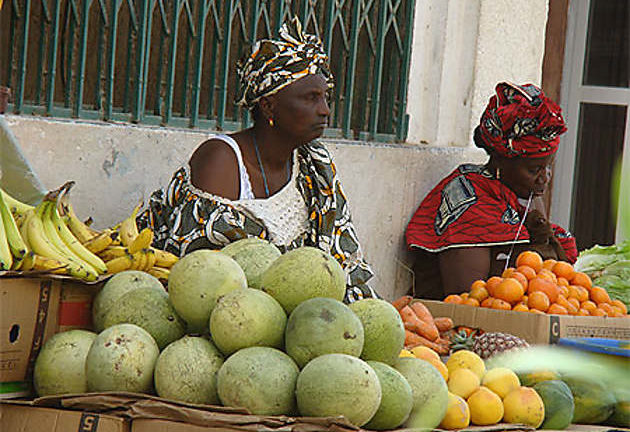As of May 2020, Senegal continues its mobilization against the Coronavirus Covid-19 pandemic, like most African countries.
The first official case of Covid-19 was diagnosed on March 2, 2020 even if, it is not excluded that subsequent epidemiological research could reveal in the months to come, an earlier arrival of the virus on the national territory, as has been the case in other countries.
Gradual response measures have been taken by Government since that date, ranging from the closure of the AIBD airport on March 20, 2020, the establishment of a curfew from 8 p.m. to 6 a.m. on March 23, and the travel ban between regions.
Almost two months after the arrival of Covid-19, we were interested in the first combined socio-economic repercussions of the measures taken internally and the consequences of Covid-19 in the main countries of immigration of Senegalese citizen such as Italy, France, Spain and the USA.
This study is based on the following 5 themes:
- unemployment and incomes ;
- food security ;
- health ;
- media ;
- distribution of Covid-19 aid.
Methodology
This survey is based on a national panel spread over the 14 regions of Senegal and followed for over 2 years by People and Data (P&D) team, well before they find out the first case of Covid-19 in Wuhan. That allows us to be able to measure some of the early effects of the arrival of the Covid-19 since March 2.
The evaluation was made from March 2 to April 26, 2020. The panel consisted of 1,200 people of all ages, gender, urban/ rural place of residence, socio-professional categories and level of education. It was established based on a two-stage random draw with stratification by region and urban / rural place of residence. This strategy has enabled the creation of a representative panel of the national population in its entirety and diversity.
Unemployment and incomes
We focused first on the change/variation in the amount of incomes received and then on the maintenance/loss of professional activity since March 2.
The decrease of incomes
Since the arrival of Covid-19, 81% of those who were on activity on March 2 have experienced a drop in their income compared to the period before Coronavirus. This decrease is approximately of same magnitude when compared to the same period in 2019.
If we look at the detailed results, we can see that women are globally more affected than men: 83% of active women are facing this situation against 79% of men.
We also noticed that the extent of the drop of incomes gradually increases with age: people over 55 are the most strongly affected by the loss of income: 86% against, for example, 79% among 18-25-year-olds.
The drop reaches 85% of the active population whose education stopped at the primary level, 89% of those who had their education in Arabic (Daara) and the same percentage for those who did not receive any education against 68% for those who pursued graduate studies.
Active workers in the informal sector (84%) are more affected by this drop of income compared to managers (53%) and Non-managers (71%) working in the formal sector. Knowing that there is a quasi inexistence of social safety nets in the informal sector, one can easily imagine the additional precariousness/poverty caused by the arrival of the virus in this category of labor force.
Analyzing the results by region reveals that the decline is more severe in Diourbel (86%), Kaolack (86%), Ziguinchor (95%), Kolda (92%) and Kaffrine (86%) regions. The drop is relatively less marked in Dakar (78%) and Fatick (75%).
Unemployment
For 100 workers who were active on March 2, 37 stopped all their activities on April 26, 28 was working part-time and 35 continued to work « normally», with 2 of them who are doing teleworking.
Let’s note that teleworking is a reality for only 2% of the working population. This can be easily explained by the incompatibility of most activities practiced with teleworking: workmen, merchants, transport jobs, fishermen etc.
The comparative analysis according to socio-demographic categories of the total loss of activity shows the following results:
- 44% of women are affected by the total loss of activity compared to 33% of men;
- 64% of people over the age of 55 vs 33% of people aged 18-25;
- 42% of adults who dropped out of elementary school, 40% of those educated in Arabic and 50% of those who did not receive any education compared to 28% of those in employment with higher education.
The regions with the highest percentages of total loss of activity are Kaffrine (60%), Ziguinchor (52%), Diourbel (51%), Thiès (45%) & Saint-Louis (42%). The less affected regions are Dakar (31%), Louga (22%) and Tambacounda (25%).
Food safety
The Covid-19 has succeeded to impact the diet of a part of Senegalese very hard and very quickly. Since its entry into the country, nearly 23% of households have lost at least one daily meal, going from 3 to two daily meals or sometimes from 2 to one daily meal.
The impact of the virus is even more pronounced on the quality of meals: 45% of households have a less rich and varied diet than before the virus arrived. This drop in quality is directly linked to a drop in consumption of meat, fish, vegetables, fruit and dairy products.
If this situation persists, it could have serious health consequences for children under 5 and pregnant women in the short and medium term.
The percentage of households having lost at least one daily meal is higher in Kédougou (55%), Sédhiou (38%), Fatick (32%), Matam (30%) and Tambacounda (27%) regions. The rate is 19% in Dakar and 18% in Louga which are the regions with the lowest rates.
Health
Waiver of health care
The study reveals that the Coronavirus already has collateral effects on the community health, including care for other pathologies. Indeed, the fear of contracting the virus along with the decision of some health professionals such as dentists, ophthalmologists or gynecologists to stop receiving patients from mid March to the first days of April, has resulted in that 14% of Senegalese gave up or were unable to receive health care, for illnesses different from Covid-19 over the period from march 02 to April 26.
The cross analysis shows that:
- women (18%) are more affected by that voluntary or involuntary renunciation of care than men (12%);
- managers working in the formal sector (33%) and students (23%) are more affected than employees working in the informal sector (8%);
- people who have attended university (20%) are more affected than those who have dropped out of elementary school (14%).
The highest rates are found in Louga (22%), Saint-Louis (20%) and Fatick (20%). The rates are lower in Matam (8%), Diourbel (9%) and Thiès (12%).
Wearing of face mask
Wearing a face mask has become a daily habit for 83% of Senegalese who choose to do so consistently in public spaces. On the other hand, there are still 17% of Senegalese who rarely wear mask or never.
The comparison of the results for those 17% of the population who rarely or never wear a mask shows that the rate of not wearing a mask:
- equals 26% for those over 55 years vs 13% for 18-25-year olds;
- equals 30% for those without any education vs. 14% for those with higher education;
- equals 30% for retirees, 27% for the unemployed, 19% for students vs 7% for executives, 8% for non-executives and 11% for entrepreneurs.
The regions with the highest rates of people non-wearing masks are: Kédougou (36%), Kaffrine (36%), Fatick (36%), Louga (30%), Matam (30%). The lowest rates are identified in Dakar (8%), Thiès (12%) and Sédhiou (15%).
Media
Press point, TV, radio, Internet and Social networks
The daily press briefings hosted by the Ministry of Health and Social Action (MSAS) are followed almost every day by more than 80% of Senegalese people on TV, Radio and on the internet and social media.
Men (84%) are more frequent in the audience of these press briefings than women (79%); young people aged 18 to 25 (88%) more regular than those over 56 (80%); executives in the formal sector (93%), entrepreneurs (89%) and business leaders (89%) more regular than the unemployed (70%) and retirees (70%).
At the regional level, the regions in which the press point is the least followed are Matam (65%), Kaffrine (68%), Sédhiou (62%) and Kédougou (55%). The audience is higher in Dakar (89%) and Thiès (87%).
The semi-containment measures taken by the authorities mean that the populations spend more time in their homes with the result that 70% of Senegalese people spend more time in front of TV. The score is similar for the radio.
The time spent on the internet and social media has increased for 51% of adults.
The analysis by category shows that:
- in percentage 59% of young people aged 18-25 years consume more megabytes than before the arrival of the virus vs 27% of those over 56 years;
- 72% of adults who attended higher education consume more megabytes than before the arrival of the virus, 60% of those who did secondary studies vs 35% among people who did not receive any education.
Distribution of Covid-19 aid
As of April 26, 2020, 13% of Senegalese households had received assistance related to the Covid-19 context. Of these 13%, the 10% were helped by a dismemberment of the State and City Councils and the 3% by NGOs.
It should be noted that these aids do not include those of Force Covid-19, the aid fund set up by the Government in the fight against Covid-19 since the distribution of this fund were to officially start on 28 April in the pilot sites of Guinaw-Rails Sud and Yenne while the observation period ended on April 26 for this study.
The referred aid was mainly distributed by City Councils. They generally consisted of kits made up of soaps and hydro-alcoholic gels.
The percentage of households receiving these first aids is higher in the regions of Sédhiou (26%), Kaffrine (14%), Saint-Louis (17%) and Ziguinchor (11%).
The areas receiving the least aid during this period were in Dakar (7%), Matam (8%), Diourbel (6%) and Kaolack (9%).
Conclusion
The study reveals the rapid and wide-ranging repercussions of the arrival of Covid-19 in Senegal on income, the decline in activity, the waiver of health care and food.
The wearing of a face mask quickly broadened thanks to the numerous communication spots encouraging the adoption of barrier measures. However, regional disparities exist.
If it were necessary to draw a profile of the most affected person in this crisis, it would be the following: a woman over 55 years who has received no education, works in the informal sector and lives in the region of Diourbel, Kaolack, Ziguinchor, Kolda, Kaffrine or Saint-Louis.
People and Data
contact@peopledatasense.com

